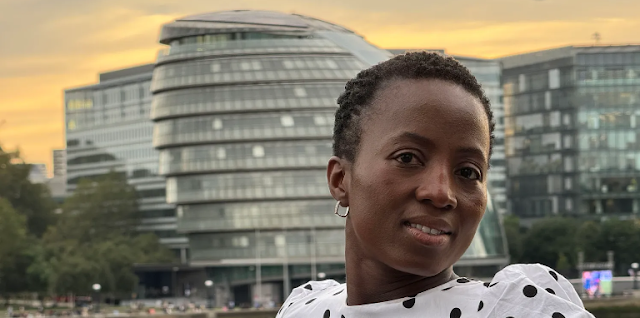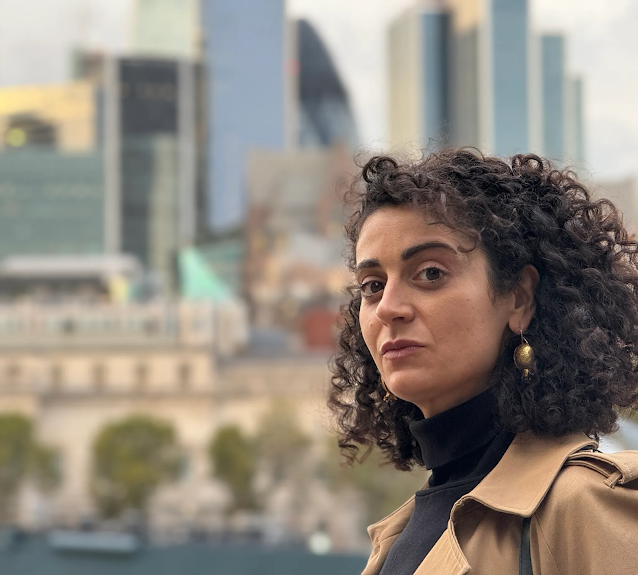During a busy period, my initial test of the new 5x telephoto lens on the iPhone 15 Pro Max was a quick comparison between 3x and 5x shots taken from my apartment, as part of my first impressions piece.
Yesterday, I had the opportunity to assess the lens's utility for portrait photography. This included examining the optical bokeh, as seen in the images above, as well as testing iOS 17's new feature, which automatically adds depth data. This feature allows you to adjust the focus after capturing the photo.
All the photos presented here are unedited, straight from the camera, with occasional cropping and resizing for web display. To view larger versions, simply right-click and open the image in a new tab.
It's worth noting that the 35mm equivalent of a 120mm lens is longer than what is typically used for portrait photography. However, I have previously used a 90mm lens for headshots, and wedding photographers often use a 70-200mm lens for various purposes, including candid portraits at longer focal lengths.
In general, a longer lens results in a shallower depth of field. Although on an iPhone, this is influenced by computational photography used to create artificial background blur, I had the opportunity to explore both optical and digital bokeh effects.
Please note that while we cannot be certain that Apple does not employ digital techniques for background blur, even with depth data turned off, the effects do appear to be natural.
Optical bokeh
With that disclaimer, let’s start by seeing how the purely optical bokeh looks. As with shorter lenses in other iPhones, this is to a significant degree dependent on how close you get to the subject. For headshots, it may not be close to a real 120mm lens on a full-frame 35mm camera, but I’d still say it works well.
First, a head-and-shoulder shot. Here, the Tower of London is on the far side of a wide road, around 400-500 feet away:
As we come in a little closer for a tighter headshot, the background blur increases (photo taken in the same place):
Although the background blur doesn't rely on digital manipulation, the iPhone does tend to apply a relatively high default level of sharpening, which may appear somewhat excessive to some users.
What stood out to me in this scenario was the ability of the iPhone to capture ample skin detail in the shadowed areas on an overcast day with the sun positioned to the right of the camera – all without any post-processing.
Here are a couple more instances showcasing the natural bokeh effect.
Once again, the lighting in this scenario was positioned to the right of and behind my two willing subjects. Yet, the iPhone adeptly captured skin details without requiring any shadow enhancement. The level of ease and quality in iPhone photography continues to impress.
Automatic depth data is a feature introduced in iOS 17, where the iPhone is designed to detect faces of humans, dogs, and cats in photos and automatically generate depth information for selective background blur during editing. However, as of the latest public release, iOS 17.0.2, this feature can be somewhat inconsistent.
For instance, take this photo with an obvious face in the frame. Surprisingly, there was no detectable depth data (typically, this menu provides the option to turn Portrait Mode on or off when depth data is available).
Yet this one, where the face is a much smaller part of the frame, no problem – depth data captured, and Portrait Mode available (and used to create artificial blur)!
This is a shot where additional background blur is really needed, but the iPhone says no:
Come in tighter, however, and the phone is happy:

Yet here, where we are fairly tight, the faces should be really easy to detect, and we really need the feature … nope and nope:
I’m sure Apple is still working on this, and that it will improve in subsequent iOS updates.
Adjusting Depth of Field Afterward
When it successfully operates, the capability to modify the apparent depth of field post-capture is a remarkable feature. Witness the striking differences in the same image when altering the effective aperture.
Let's begin with f/8 (keep in mind that this simulates a 120mm lens, so even at an aperture typically associated with less background blur, there's still a noticeable amount):
Now f/4.5:
And finally, f/1.4 (which would be one very expensive 120mm lens!):
Now, upon close examination, you may still notice slight traces of blooming around the edges here and there. If you inspect beneath Gloria's armpit, you'll also spot instances where the iPhone still fails to capture certain background elements. So, while Portrait Mode isn't flawless, it's undeniably remarkably impressive for the most part.
Here's another example, this time beginning at f/11:
Now f/3.5:
Finally, f/1,4:

One other weakness of Portrait Mode that persists is that, while the iPhone does often achieve beautifully natural-looking focus fall-off behind the subject, it seems to ignore examples where the foreground should also have some blur.
For example, the wall in the background falls off very realistically:
Not so the foreground. With this shallow a DoF, we should see some degree of blurring to the fingers and end cap, but here the foreground is as sharp as the face:
Live Photo or Portrait, not both
One limitation that remains is that you can have a Live Photo, to allow you to choose a different frame within the capture period, or depth data, but not both.
In this shot, my timing was off for the facial expression, but Live Photo can fix that:
However, if I also want to blur the background, then it ignores my key photo choice and reverts to the default frame:
Hopefully that, too, is something that can be fixed in a later update.
Noise
The other persistent issue with iPhones is that the ultrawide and telephoto lenses don’t get the same size sensor as the main camera, so their images are noisier, especially in low light. View any of the above photos at larger size, and you can see that.
For me, it’s not a dealbreaker; the noise is actually somewhat film-like. But it does mean that there is a noticeable difference in quality between the main camera and the others, and I’d love to see Apple show the other cameras the same sensor love as the main ones.
Action Mode Video Exploration
While my primary focus last night was on capturing still images, I couldn't resist testing a fascinating video feature. Renowned photographer and videographer Tyler Stalman had showcased a clever application of Action Mode: using it as a digital Steadicam for shooting while in motion.
Tyler's example featured a statue, but it immediately occurred to me that this could be an exciting method for filming a person, so I decided to put it to the test.
I embarked on capturing footage in a tight, handheld manner, without the use of a gimbal, utilizing the equivalent of a 120mm lens while navigating uneven terrain. Moreover, I didn't employ any specialized walking techniques. What you see here is directly uploaded from the camera—no post-editing or stabilization.
I must admit, the outcome left me thoroughly impressed! This effect is undeniably captivating, and I can envision incorporating it into a short film. In fact, I already have an idea in mind...
Conclusions
The 5x telephoto lens on the iPhone 15 Pro Max is very tight for portraiture. I’m not sure I’d use it very often. The noise levels means I would definitely be wary of doing so indoors (though I will test it).
However, it’s a great option to have. The 48MP sensor means that you can use the 2x digital zoom without losing quality over its predecessor, and there are times when a 5x zoom will get you a shot that wouldn’t otherwise be possible.
I’ll be testing it also for cityscapes, and I think that’s a more realistic use for me – watch this space.
What are your impressions of the iPhone Pro Max 5x telephoto lens? Please share your thoughts in the comments, and links to sample photos would be great!






















